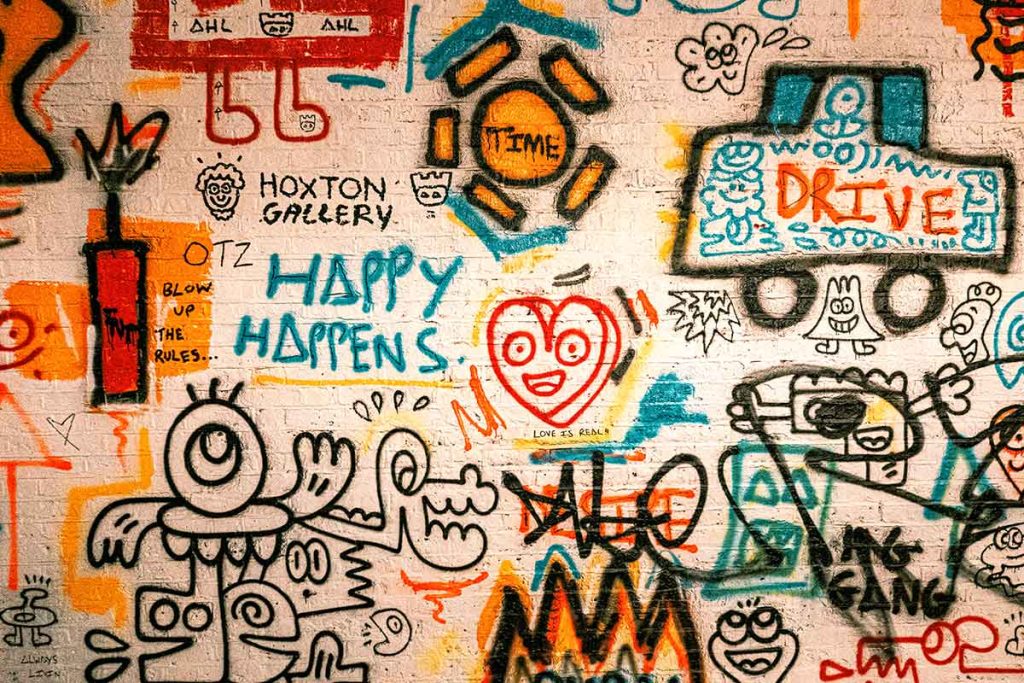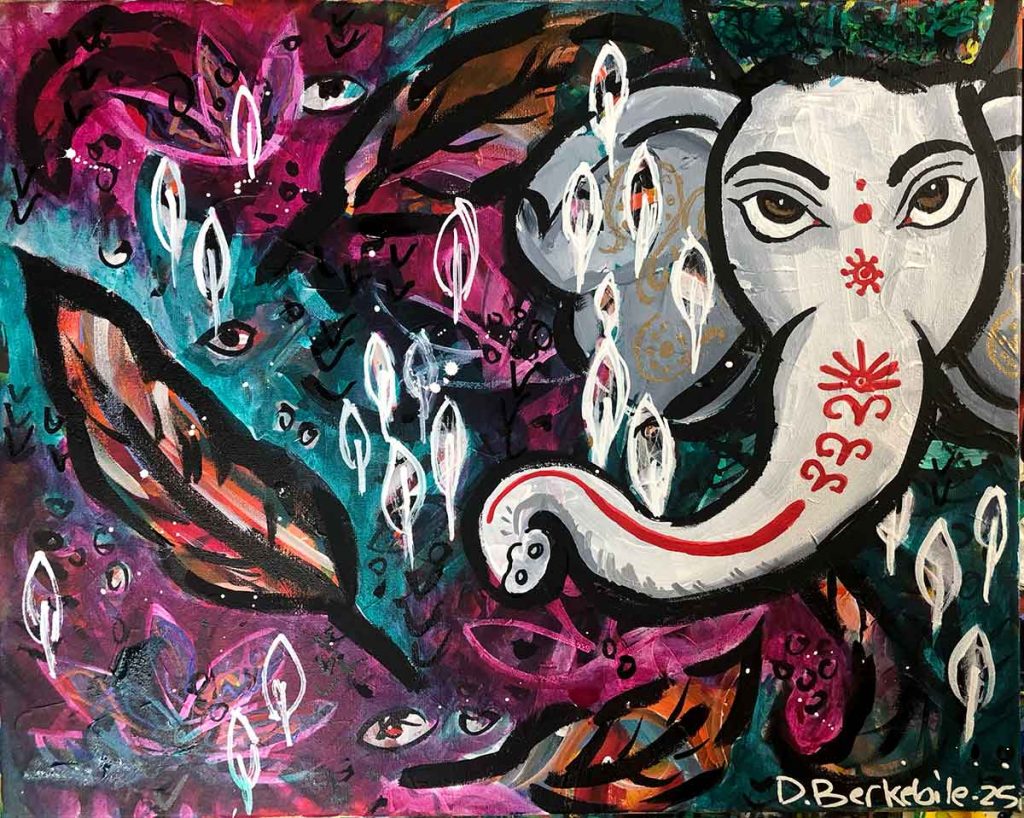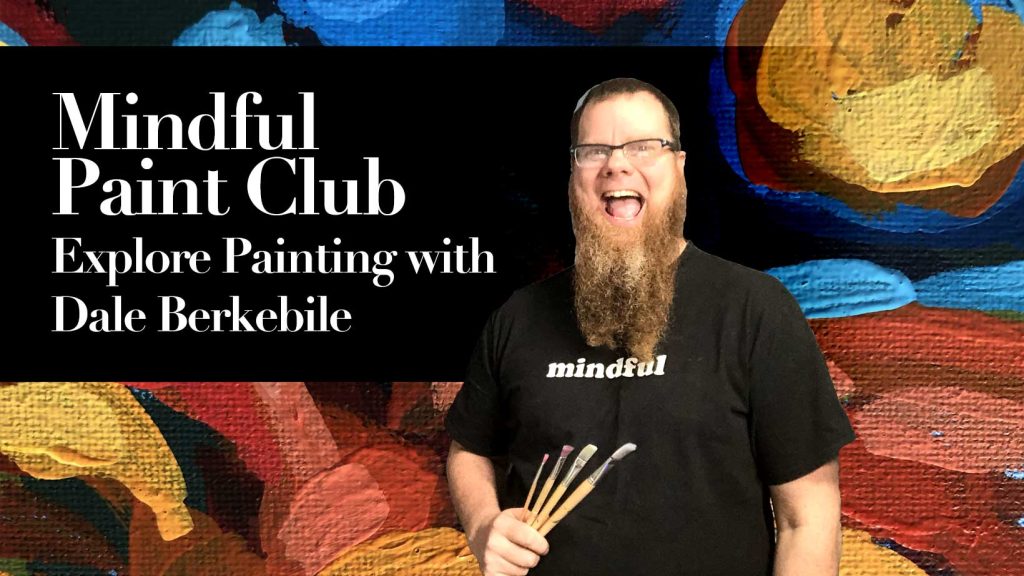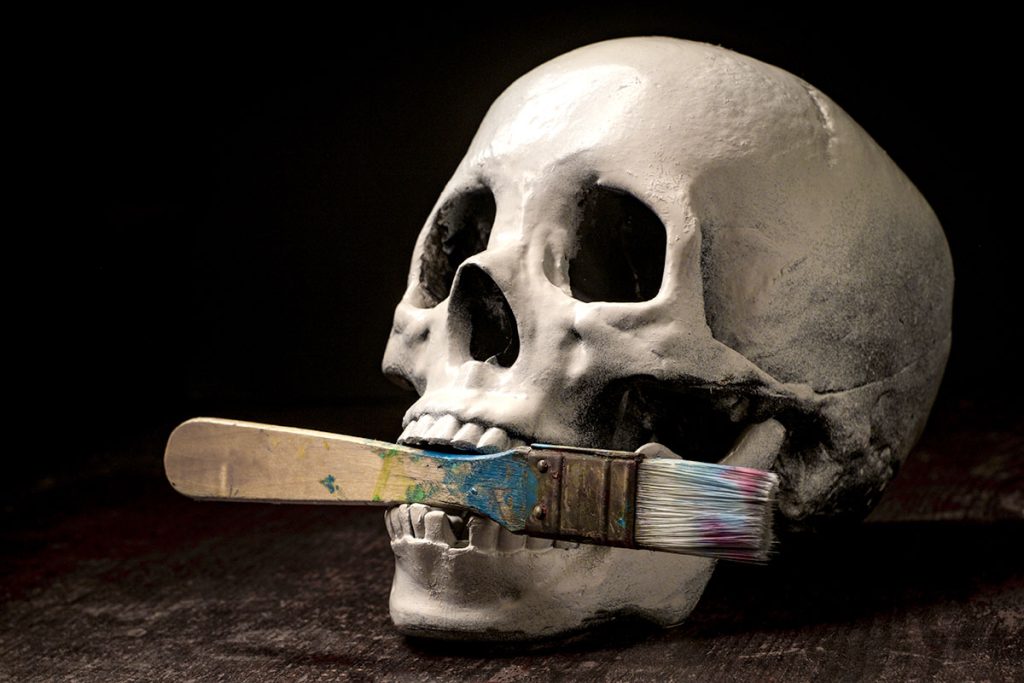
Context of the question… What is Art?
This morning I saw a Facebook post of some graffiti that an admin of a FB group shared. The graffiti was text saying… “Don’t let the Bastard grind you down!” which was surrounded by flowers. It was done kind of graphically and looked nice but was on an underpass somewhere.
The admin originally called it “graffiti” but then changed it to “art” as the descriptor. The the artist joined the conversation and mentioned calling their work graffiti was just fine so the admin changed it back.
This got me thinking a bit about what is art?
I’ve book on this almost 2-year painting journey so ART is kind of my life these days. On my journey I do goofy play just for fun, some quotes that have taken on a graffiti style by accident that I really love, spiritual work, healing work, and then more fine art that I sell.
As I move into the art sales space I do personal sales to individuals that like my work and are connected to me but now I am moving into my first juried show and it brings up the thoughts of classism and accessibility.
You see I never went to an art museum until I was in my mid-twenties because that seemed too hoity-toity. Then I found I loved modern art and fell in love with the San Francisco MOMA (museum of modern art). Since then, I’ve studied art more and fell in love with art and how it made me feel.
I have always loved the idea though of free art days where museums open the museum up to the public for free to make art more accessible to everyone. We’ve seen this a lot at our local Modern in Fort Worth.
Anyhow, I thought maybe I should explore my thoughts on and open the conversation or dialogue of What is Art? and see where it goes. So have a read of the thoughts I’ve been exploring and feel free to share your thoughts on this topic.
Introduction: The Question That Paints Itself
What is art?
A framed oil painting? A child’s crayon drawing? A poem scrawled on the back of a napkin? A mural on the side of a crumbling wall? A teen busking with a fresh song on the street or subway?
We all feel art, but struggle to define it. It lives somewhere between creation and connection… an act of making, and a moment of meaning. It speaks without speaking, often saying what we didn’t know needed saying. And yet, somewhere along the way, society began to divide it, rank it, and gatekeep it.
Defining Art: Beyond the Frame
Art is often defined as the expression of human imagination, creativity, and emotion. One that is made visible, audible, or tangible… but that barely scratches the surface of a good definition, am I right?
Art is not just painting or sculpture. It’s dance, rhythm, ritual. It’s the soft curve of calligraphy or the jarring clang of a protest song. It can be beautiful or brutal. Meticulously crafted or messy and raw.
What unites all art is intention — even when that intention is to be chaotic or unresolved. It’s the impulse to transform inner experience into outer expression, to create something new from nothing.
Art doesn’t ask permission. It simply arrives, aching to be seen.
Who Makes Art? (Spoiler: Everyone Can)
The myth of the “artist” as a chosen few… the trained, talented, touched by genius, has done more harm than good. It narrows a vast, inclusive truth: we are all creative beings.
If I am being honest being conditioned and praised for my art and that fine art is for the rich this is sort of a new belief for me. I am trying to welcome non-artists to enter the world of creativity and painting. I try to praise and cheer on artists at all stages because I now see art as more than making beautiful pictures. Art is good for you wellbeing no matter the quality or results of the art itself.
Art is not only for galleries or institutions. It’s for kitchens, sidewalks, journals, and barns. It’s for children with finger paint and elders quilting in circles. It’s for graffiti writers and guitar players, dancers and doodlers, dreamers and doers.
The question isn’t who can make art, it’s… who dares to, in a world that often tells us we’re not enough, to get vulnerable and just do it and maybe even be bold enough to share it?
But What Is the Purpose of Art?
Art wears many faces and serves many purposes:
To communicate when words fall short. Think of street signs or building environmental design signage telling people where to go or what to do with symbols.
To witness joy, grief, transformation. It is important to feel seen. This makes me think of Kara Walker telling the story racism in America or maybe Keith Haring becoming a famous gay artist in a time of AIDS.
To protest injustice and plant seeds of change. I love some good protest art and am amazed at how clever society can be when an everyday person is creating a sign to protest. It might include art, sculpture, or just text but protest signs are proof everyone is creative if they just apply themselves.
To remember — history, ancestors, selves. I find cultural art so fascinating to learn and understand certain communities.
To heal trauma or awaken something lost. This is the healing part and proves how powerful art is. It could be formal art therapy or just doodling in a meeting that delivers or processes emotions.
Sometimes art is made for others. Sometimes it’s made just to survive another day. And sometimes it’s made for the sheer, sacred joy of making — because creation, in itself, is life-affirming.
Art doesn’t always solve problems. But it helps us hold them with more grace.

When Did Art Become Elitist?
Throughout history, art has been used to showcase power. Think palaces filled with commissioned portraits or churches covered in grand murals. Over time, institutions like museums, academies, and galleries began defining what “counts” as art.
This birthed the concept of “high art”: rare, expensive, and often disconnected from everyday people. The cost of materials, access to training, and biases around race, gender, and class only deepened this divide. This makes me sad.
Suddenly, a canvas in a gallery was “important,” but a protest banner was “just political.” A quilt was “craft,” but a tapestry was “fine art.” The gatekeepers decided.
And yet, people have always made art anyway, in the margins, in the streets, in the sacred spaces of the everyday.
High Art vs. Low Art: Who Made the Rules?
The terms high art and low art were invented to maintain status — not to reflect value. High art tends to be academic, institutional, and expensive. Low art is often mass-produced, popular, or community-based.
But does this mean a tattoo is worth less than a marble sculpture? That a comic book can’t be emotionally profound? That hip hop, graffiti, or animation aren’t valid art forms?
I’ve always love low art and outsider stuff. I guess it is the punk rock and DIY (do it yourself) ethos that influenced this. But I also love high art but would like to see it made more available to the masses. I kind of hate divisiveness and better than type attitudes and the older I get the more I see our humanness and interconnectedness which makes me want to honor all communities. Make my own rules I guess, but is anyone interested?
The truth is, meaning is not dictated by prestige… but by connection.
If a piece of art reaches someone, moves them, changes them… does it matter if it’s made of oil paint, crayons, or pixels?
Graffiti: Vandalism or Vital Expression?
Perhaps no art form divides opinion more than graffiti. For some, it’s defacement… illegal, rebellious, destructive. For others, it’s raw truth painted in bold colors, and an act of presence in a world that ignores certain voices.
Graffiti is often the visual voice of the voiceless. The youth, immigrants, working-class artists, the politically oppressed. It speaks of beauty and pain, of joy and resistance. And like all art, it asks: Do you see me?
Yet the irony remains: graffiti is criminalized in one context and celebrated in another. A spray-painted wall may be buffed clean or painted over until a famous artist tags it, and then it’s protected with glass.
Who decides?
Who Defines Beauty? Who Validates Art?
Beauty is subjective. So is value. And yet much of the art world runs on validation from critics, collectors, and curators who, often unconsciously, reflect dominant cultural biases.
But what if beauty isn’t in the brushstroke or the polish but in the honesty of what’s expressed? What if art is valid simply because it was made with soul?
You don’t need a gallery to call yourself an artist. You need a willingness to create, without applause.
The art that changes the world isn’t always pretty. But it’s real. And that might be the most beautiful thing of all.
Conclusion: Art Belongs to Everyone
So what is art?
It is a mirror, a map, a cry in the dark.
It is protest and prayer.
It is a child’s drawing and a maestro’s symphony.
It is truth made visible, even when uncomfortable.
It is you, daring to create.
It is all of us, trying to make sense of being alive.
Don’t wait for permission. Don’t wait for validation.
Art already lives in you.
Let it out.
📚 Further Exploration & References
Watch:
Warning – watching these could turn you into an artist or flip your idea of art on it’s ear.
Read:
Ways of Seeing by John Berger
The Creative Act by Rick Rubin
What is Outsider Art? – The Guardian
More from Me:
Share your Thoughts…
What does art mean to you? Share your thoughts in the comments. I’d love to hear your definition.
Want to Learn More About The Art I Am Creating & Get The Inside Scoop on Things and Early Purchase Opportunities?
Want to Create Some Art Together?
If you want to reconnect with your creativity, join my Mindful Paint Club.


